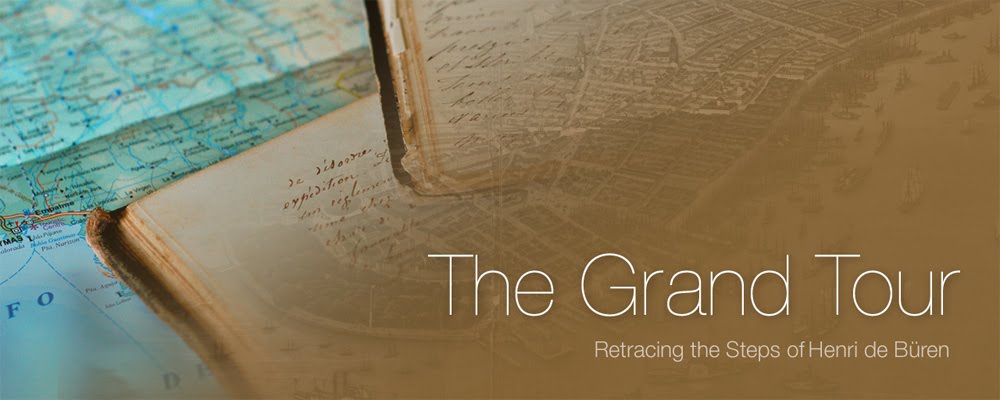
One of Henri's sepia drawings – Tacubaya, Mexico, 1853
Throughout Henri de Büren's correspondence and journal from his 1852-53 Voyage Across the Americas, he speaks frequently about his artwork. To date I have found only five drawings. Yesterday I found proof that there were many, many more.
Around 1920 or so two of his daughters who were living in St. Blaise near Neuchâtel put up for a sale an album of 135! original drawings that Henri made on his trip. The 135 drawings were named by subject and place. His drawings included:
– Louis Agassiz's home in Cambridge, MA
– Numerous drawings of Cuba and the American South
– Cacahuampila Grotto
– Popocatepetl Crater
– Cholula Pyramid
– Port of Acapulco
– Numerous drawings of Lima
– Indian settlements in Peru
The album's artistic and historical worth was also verified at the time in a letter to the sisters by Maurice Jeanneret, President of the Neuchâtel Historical and Archaeological Society and Adjunct Conservator of the Neuchâtel Fine Art Museum. I was told by a family member that the album was sold in the 1920s to man in New York, but I have no way to verify this.

Carbon Copy of Typed Pages which Describe Each Drawing
I am going to do my best Indiana Jones impression and start my search for the Lost Album. It is not only of great importance to my project, but to me personally. Wish me luck.






























